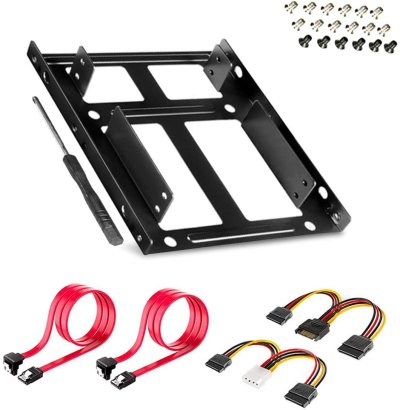GNOME Disks rocks for resizing partitions!
Having to resize a partition on a linux machine, I spent almost my entire day struggling trying to get that done with Gparted. Don't know if I have a blind spot with Gparted or what. After trying and trying and searching for a good example, no luck. Was almost ready to call it a night when I got to thinking there's got to be a better way.
Decided to try GNOME Disks. A few mouse clicks the resize finished in a few seconds. Easy as pie. I'm a believer!
What a co-incidence, I was just looking into this.
IIRC, I've used Gparted to resize some partitions, it was slow, but I don't recall any problems. But if GNOME Disks worked for you, that's great.
I'm in the process of cloning my Xubuntu install. I regularly back up the data, but I'd like to be able to boot from an external clone, just in case. And to have the entire system/install backed up. I like to boot from them to test them.
The first problem though (which I think I've solved) is that a clone is a clone - it has the same UUIDs as the source. If you reboot with two drives with identical UUIDs, all sorts of confusion can happen with the system. This is a laptop, not easy to remove the source drive. But it looks like I can go into the BIOS and simply disable the internal drive, so it won't even see it at that point.
For cloning SW, I see that FOXCLONE is getting good reviews. I was attracted to one statement - it will clone a larger partition to a smaller one (assuming of course the 'used' on the source is no larger than the destination partition). For me, that was always kind of a pain with any 'dd' type cloning, my partitions are sized with lots of room to spare for the future, I really don't want to take up all that empty space on my clone.
False 'advertising', IMO! In the instructions, they say to do this, use Gparted to shrink the source partition! well, that's not FOXCLONE doing anything, it's Gparted shrinking the partition so that it is no longer larger than the destination. I don't want to shrink, then resize again after I clone, there's risk in those operations (so back up before you do it - a Catch-22!).
I have separate root and /home partitions (plus a few unused partitions that I planned to put a bare bones Xubuntu on, just to have something else to boot into for troubleshooting, or testing). Now I'm a little unsure what I all need to do on the destination drive, in terms of partitioning, so that it will boot. The instructions only seem to cover cloning the entire drive. My internal is 500GB SSD, I have a 2GB external, so I guess I'm OK anyhow, but I think it will take longer, and use 500GB of space rather than ~ 100GB actually 'used' (including 30GB of swap).
Well, I'm off to try some things. Maybe it will all be clear when I actually step through it. Wish me luck!
-ERD50


 ) to work.
) to work.